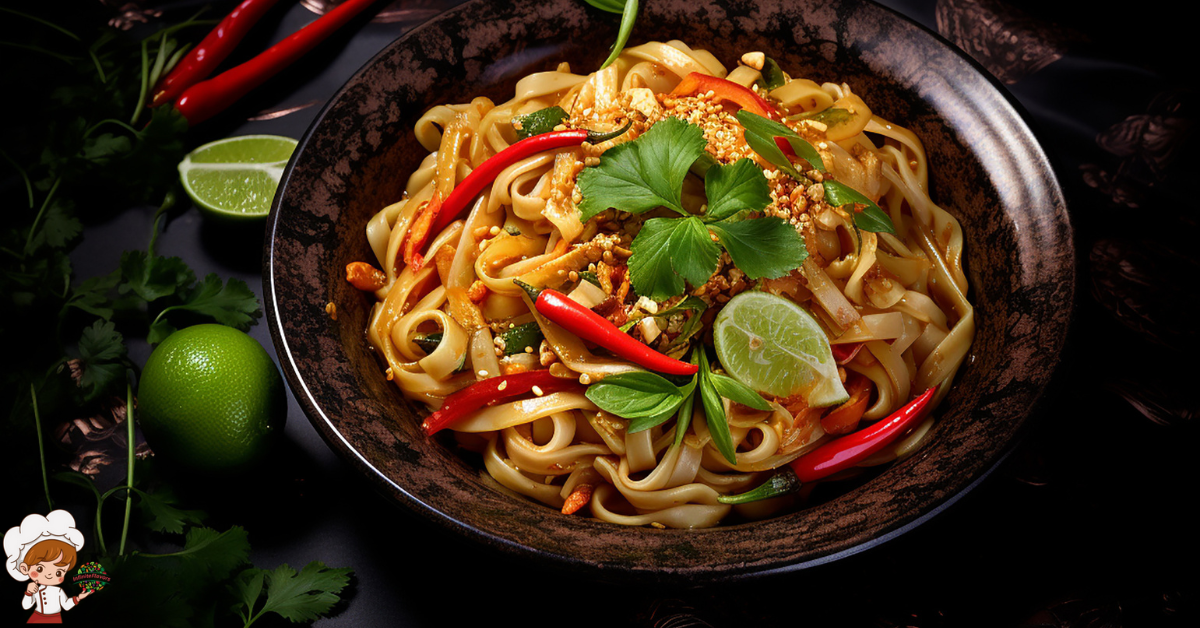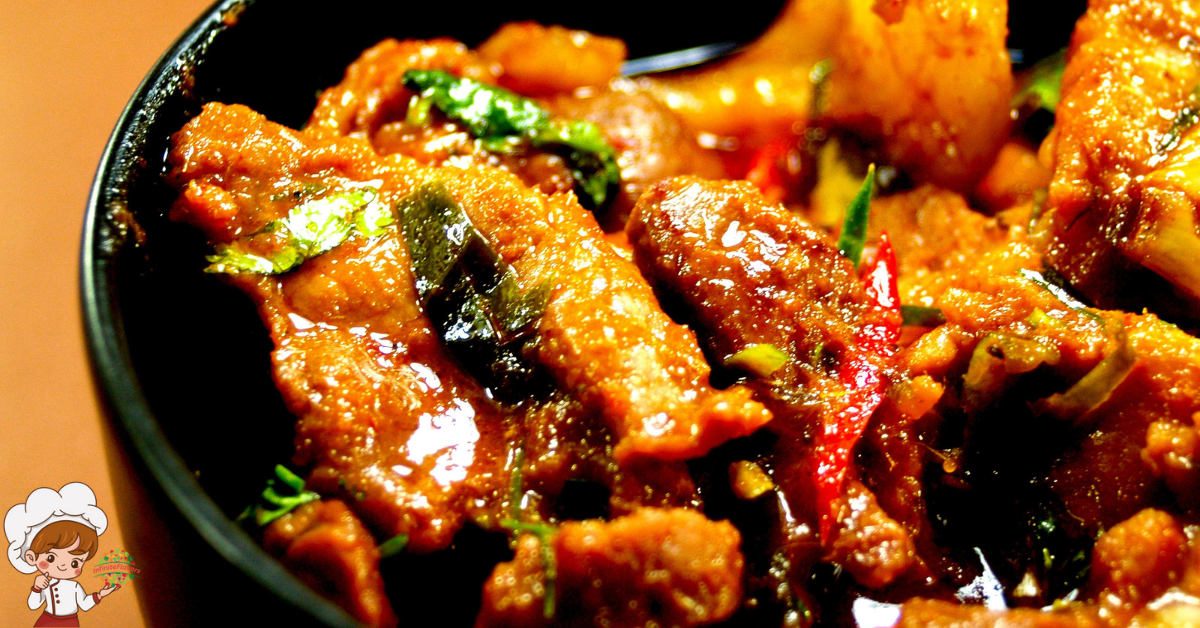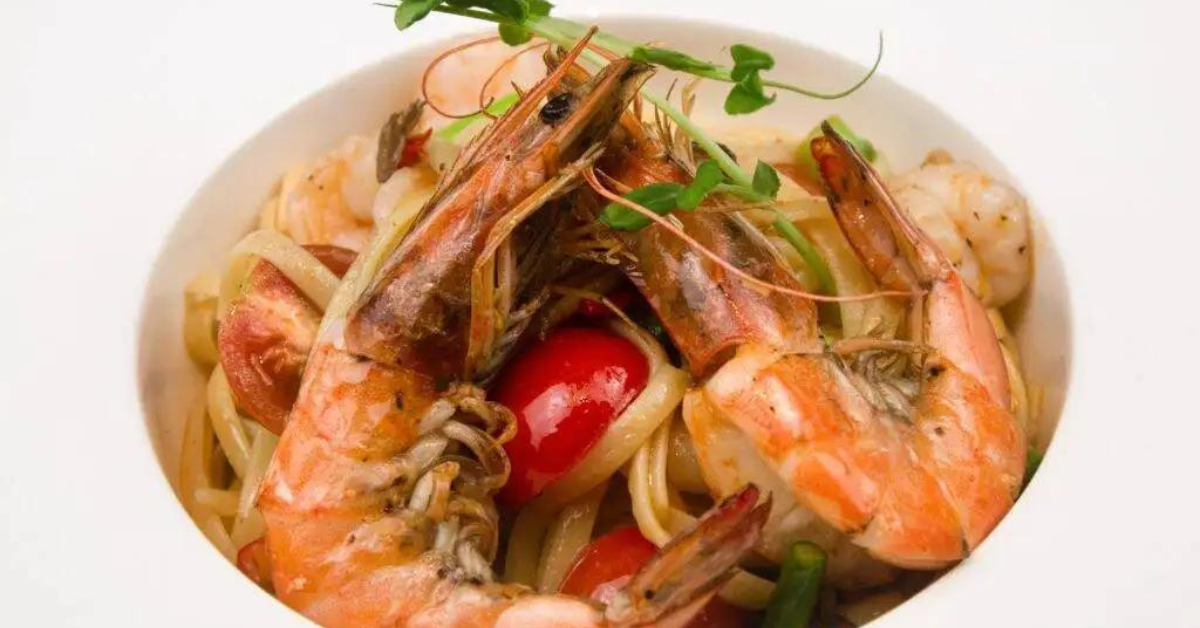The Best Must-Try Spanish Cured Meats

The Best Must-Try Spanish Cured Meats; Have you ever experienced the joy of sinking your teeth into a slice of Jamón Ibérico so tender and flavorful that it seems to melt in your mouth? It’s like tasting a symphony of flavors, a harmonious blend of saltiness and sweetness that lingers on your palate. But the world of Spanish cured meats extends far beyond just Jamón Ibérico. There are a plethora of must-try options waiting to be explored, each with its own unique characteristics and mouthwatering appeal. So, prepare yourself for a tantalizing journey through the world of Spanish cured meats, where every bite promises to be a culinary adventure.
Jamón Ibérico
If you’re a fan of Spanish cured meats, then brace yourself for the mouthwatering delight that is Jamón Ibérico. This highly prized and luxurious ham comes from the black Iberian pig, which roams freely in the oak forests of Spain, feasting on acorns for a rich and distinctive flavor. Jamón Ibérico is known for its intense, savory taste and melt-in-your-mouth texture, making it a true delicacy.
Not only does Jamón Ibérico satisfy your taste buds, but it also offers several health benefits. This delicious ham is rich in monounsaturated fats, which are known for their heart-healthy properties. It also contains oleic acid, a type of omega-9 fatty acid that helps reduce bad cholesterol levels and promotes overall cardiovascular health. Additionally, Jamón Ibérico is a great source of protein, providing essential amino acids that support muscle growth and repair.
Now, let’s dive into some delectable Jamón Ibérico recipes that will take your culinary skills to the next level. One classic dish is ‘Pan con Tomate y Jamón,’ which consists of crusty bread rubbed with ripe tomatoes, drizzled with olive oil, and topped with thin slices of Jamón Ibérico. The combination of the sweet tomatoes, peppery olive oil, and rich ham creates a burst of flavors that will leave you craving for more.
Another popular recipe is ‘Huevos Rotos con Jamón,’ which translates to ‘Broken Eggs with Ham.’ This simple yet satisfying dish features fried eggs served over crispy potatoes and Jamón Ibérico. The runny yolk and the salty ham complement each other perfectly, creating a harmonious blend of textures and flavors.
Chorizo
Chorizo, a popular Spanish cured meat, is known for its flavorful and spicy profile. Its distinct combination of spices, such as paprika, garlic, and chili, gives it a unique taste that is loved by many. Not only is chorizo delicious on its own, but it is also incredibly versatile and can be used in a variety of dishes, adding a burst of flavor to everything from soups and stews to sandwiches and tapas.
Flavorful and Spicy
With its bold and intense flavor profile, Spanish chorizo tantalizes the taste buds with its fiery spice and rich smokiness. This flavorful and spicy cured meat is a staple in Spanish cuisine, known for its vibrant red color and distinctive taste. Made from a blend of pork meat, flavorful seasonings such as paprika, garlic, and various spices, chorizo offers a unique combination of flavors that are both savory and tangy.
Its cultural significance in Spain cannot be overstated, as it is used in a wide variety of traditional dishes like paella, tapas, and stews. The smoky aroma and robust taste of chorizo add depth and complexity to any dish, making it a must-try for those seeking an authentic Spanish culinary experience.
Versatile and Delicious
One cannot deny the versatility and deliciousness that chorizo brings to the table. This Spanish cured meat is a culinary gem that can be enjoyed in various ways. Whether cooked or consumed raw, chorizo never fails to deliver its rich and robust flavor. When it comes to cooking techniques, chorizo can be fried, grilled, or even baked, allowing it to take on different textures and intensify its smoky taste.
Regional variations also add to its charm, with each area in Spain having its own unique style of chorizo. From the mild and slightly sweet chorizo from Leon to the spicy and bold chorizo from Extremadura, there is a chorizo for every palate. Its versatility in dishes like paella, stews, and tapas makes it an essential ingredient in Spanish cuisine.
Salchichón
Salchichón, a traditional Spanish cured meat, is highly regarded for its rich and savory flavor. Made from a traditional recipe that has been passed down through generations, salchichón is crafted using high-quality cuts of pork, combined with a blend of spices and seasonings. While the recipe remains consistent, there are regional variations that give each salchichón its unique flavors.
The cooking techniques used to make salchichón involve a careful balance of curing, drying, and aging. The meat is seasoned, stuffed into casings, and then left to cure for several weeks or even months. During this time, the flavors intensify, and the meat develops its distinctive taste and texture. The result is a firm, yet tender, meat with a deep, smoky flavor.
When it comes to pairing suggestions, salchichón pairs well with a variety of accompaniments. Serve thin slices of salchichón with crusty bread, olives, and a selection of cheeses for a flavorful charcuterie board. You can also use it as a key ingredient in sandwiches, salads, or pasta dishes, adding a burst of flavor to any meal.
Several popular brands produce excellent salchichón, ensuring consistent quality and taste. Look for brands such as Fermin, Casa Riera Ordeix, or Embutidos Fermín, which are renowned for their commitment to traditional production methods and high standards.
In terms of health benefits, salchichón is a good source of protein and essential vitamins and minerals. However, it is also high in sodium and fat, so it should be enjoyed in moderation as part of a balanced diet.
Making homemade salchichón is a time-consuming process that requires careful attention to detail. However, many families still preserve this tradition, passing down their secret recipes from one generation to the next. The cultural significance of salchichón cannot be overlooked, as it represents the culinary heritage and traditions of the Spanish people.
Sobrasada
Get ready to savor the flavorful and spicy Sobrasada, a versatile and spreadable Spanish cured meat. This traditional Mallorcan delicacy is a must-try for meat lovers seeking a unique and satisfying experience. With its rich taste and smooth texture, Sobrasada is sure to captivate your palate and leave you wanting more.
Flavorful and Spicy
Sobrasada, a flavorful and spicy Spanish cured meat, is a must-try delicacy that will tantalize your taste buds with its rich and intense flavors. Made from ground pork and paprika, this traditional sausage from the Balearic Islands is a true culinary gem. Here are three reasons why you should indulge in this delectable treat:
- Creamy and smooth texture: Sobrasada has a velvety texture that melts in your mouth, making it perfect for spreading on crusty bread or crackers.
- Fiery and robust taste: The combination of smoked paprika and spices gives Sobrasada its distinct and fiery flavor, adding a spicy kick to any dish.
- Versatile flavor pairing suggestions: Enjoy Sobrasada on its own, pair it with aged cheese for an explosion of flavors, or use it as a topping for pizzas and pasta dishes.
While Sobrasada is undeniably delicious, it is also worth noting its health benefits. This cured meat is a good source of protein and contains essential vitamins and minerals. However, moderation is key due to its high fat content. So, savor the flavor but enjoy responsibly!
Versatile and Spreadable
Indulging in the versatile and spreadable Sobrasada will take your culinary experience to new heights, as this Spanish cured meat offers a world of possibilities for your taste buds. Sobrasada is a rich, flavorful sausage made from ground pork, paprika, and other spices. Its smooth and creamy texture makes it perfect for spreading on bread or crackers, adding a punch of flavor to any dish.
Sobrasada can also be used in a variety of spreadable recipes, such as pasta sauces, dips, and even as a topping for pizza. In addition to its delicious taste, Sobrasada also offers health benefits. It is high in protein, iron, and essential vitamins, making it a nutritious choice for meat lovers. So why not elevate your meals with the versatility and spreadability of Sobrasada?
Traditional Mallorcan Delicacy
Immerse yourself in the rich cultural heritage of Mallorca with the traditional delicacy of Sobrasada, a mouthwatering cured meat that will transport your taste buds to the sun-soaked island. Made from ground pork, paprika, salt, and other spices, Sobrasada is a true delicacy that embodies the essence of Mallorcan cuisine. Here are three reasons why Sobrasada is a must-try traditional Mallorcan delicacy:
- Unique Curing Techniques: Sobrasada is cured using a special technique that involves fermenting the meat for several weeks. This process not only enhances the flavor but also gives the meat its distinctive texture and aroma.
- Authentic Mallorcan Recipes: Sobrasada is a key ingredient in many traditional Mallorcan recipes, such as the famous “Pa amb Oli” (bread with olive oil). Its rich and savory flavor adds depth to dishes and makes them truly authentic.
- Versatile and Flavorful: Sobrasada can be enjoyed in various ways – spread on bread, added to stews, or used as a topping for pizzas and pastas. Its unique taste and versatility make it a favorite among locals and tourists alike.
Indulge in the culinary delights of Mallorca with Sobrasada, a traditional delicacy that showcases the unique flavors and curing techniques of the island.
Lomo Embuchado
Lomo Embuchado, a traditional Spanish cured meat, is characterized by its exquisite flavor and tender texture. Made from the pork loin, this delicacy is prepared using traditional curing techniques that have been passed down through generations. The process involves marinating the meat in a mixture of salt, garlic, and spices, before being wrapped tightly in a natural casing and left to dry for several weeks. This careful curing process allows the flavors to develop and intensify, resulting in a meat that is both rich and savory.
One of the unique aspects of Lomo Embuchado is its versatility. While traditionally made with pork, there are now alternative meat options available, such as beef or venison, that offer a different flavor profile for those looking to experiment. Regardless of the meat used, the end result is a product that is deeply satisfying and bursting with deliciousness.
When it comes to taste, Lomo Embuchado does not disappoint. The meat has a delicate sweetness that is balanced by a slightly salty tang. Its tender texture melts in your mouth, making each bite a true delight. Whether enjoyed on its own, thinly sliced and served on a charcuterie board, or incorporated into a variety of dishes, Lomo Embuchado adds a touch of sophistication to any meal.
Morcilla
Morcilla, a traditional Spanish cured meat, offers a unique and robust flavor that is sure to satisfy even the most discerning palate. Made from a combination of pork blood, fat, and spices, this dark and savory sausage is a staple in Spanish cuisine. Here are three things to know about Morcilla:
- Traditional recipes: Morcilla is made using traditional recipes that have been passed down through generations. The key ingredient, pork blood, gives it its distinctive color and rich flavor. Combined with spices like paprika, garlic, and oregano, the result is a complex and earthy taste that is truly one-of-a-kind.
- Regional variations: While Morcilla is enjoyed throughout Spain, different regions have their own variations of this cured meat. For example, in the northern region of Asturias, Morcilla is made with rice, giving it a softer texture and milder taste. In contrast, the Morcilla from Burgos in the Castilla y León region is known for its strong flavor and firm texture. Each region takes pride in their unique recipe, showcasing the diversity of Spanish cuisine.
- Versatile uses: Morcilla can be enjoyed in various ways. It can be cooked and served as a tapa, sliced and added to stews or omelets, or even used as a filling for empanadas. The richness of the Morcilla enhances the flavors of any dish it is added to, making it a versatile ingredient in Spanish cooking.
Cecina
Now let’s explore the next Spanish cured meat, Cecina, which offers a distinct flavor profile that is sure to captivate your taste buds. Cecina is a type of cured beef that is thinly sliced and air-dried. It has a deep and intense flavor that is both savory and slightly smoky.
Cecina is traditionally prepared by salting the meat and allowing it to dry for several weeks. The process of air-drying gives the meat a unique texture that is tender and melt-in-your-mouth. The result is a cured meat that is rich in flavor and has a beautiful marbling of fat throughout.
When it comes to pairings, Cecina pairs wonderfully with a variety of ingredients. One classic combination is to serve it with Manchego cheese, which helps to balance the richness of the meat with its nutty and slightly sweet flavors. Another great pairing is with crusty bread and a drizzle of extra virgin olive oil. The bread adds a crunchy texture, while the olive oil complements the savory flavors of the meat.
In terms of serving suggestions, Cecina is incredibly versatile. It can be enjoyed on its own as a delicious snack, or it can be incorporated into different dishes. For example, you can use it as a topping for salads or a filling for sandwiches. Its intense flavor adds depth to any dish it is added to.
Fuet
Fuet, a traditional Spanish cured sausage, offers a delightful combination of flavors and a satisfying texture that is sure to please any meat lover. This traditional Catalan cured meat is made from a mixture of pork meat, salt, black pepper, and garlic. Here are some key points to help you understand fuet and its different variations:
- Variations: Fuet comes in various forms, each with its own unique twist. Some variations include fuet with added spices like paprika or fennel seeds, giving it an extra punch of flavor. Others may be aged for different lengths of time, resulting in variations in taste and texture.
- Making Process: The process of making fuet involves grinding the pork meat and mixing it with the spices and seasonings. The mixture is then stuffed into a casing and left to dry and cure for several weeks. The slow curing process allows the flavors to develop and intensify, creating a rich and savory taste.
- Regional Variations: While fuet is a traditional Catalan cured meat, it is also enjoyed in other regions of Spain. Each region may have its own unique take on fuet, incorporating local ingredients and flavors. For example, in the Balearic Islands, fuet is often made with cured pork loin instead of ground meat, resulting in a leaner and firmer texture.
Whether you enjoy fuet on its own, sliced thinly and enjoyed as a snack, or use it as an ingredient in your favorite recipes, this traditional Spanish cured meat is a true culinary delight. Its distinct flavors and textures make it a must-try for any meat lover.
Longaniza
Longaniza, a flavorful Spanish cured sausage, captivates the senses with its aromatic spices and succulent texture. This popular sausage has a rich history in Spanish cuisine and is enjoyed across the country. Longaniza can be found in different regional variations, each offering its unique twist on this delectable delicacy.
Longaniza recipes vary throughout Spain, showcasing the country’s diverse culinary traditions. In Catalonia, you’ll find longaniza made with pork, garlic, and black pepper, giving it a robust and slightly spicy flavor. In Aragon, the sausage is seasoned with paprika, resulting in a smoky and earthy taste. Valencia’s version of longaniza features a blend of pork, garlic, and salt, producing a simpler yet equally delicious flavor profile.
These regional variations highlight the creativity and distinctiveness of Spanish cuisine. Whether you prefer a spicier longaniza or a milder one, there is a recipe to suit every palate. The versatility of longaniza makes it a fantastic ingredient in various dishes. It can be grilled, fried, or cooked in stews, adding its unique flavor to any meal.
Longaniza is not just a sausage; it is an expression of the rich culinary heritage of Spain. Its flavors and textures are a testament to the craftsmanship and passion of Spanish cooks. So, the next time you have the opportunity to try longaniza, savor every bite and appreciate the regional variations that make this sausage a true culinary delight.
Butifarra
When it comes to Butifarra, there are various types to explore. From the classic Butifarra Blanca to the smoky Butifarra Negra, each variation offers its own unique flavors and textures. Traditional preparation methods such as grilling or frying bring out the best in these sausages, and they can be enjoyed on their own or paired with crusty bread, roasted vegetables, or a refreshing salad.
Types of Butifarra
Butifarra, a traditional Spanish cured meat, comes in a variety of enticing types that are sure to satisfy any meat lover. Made from traditional recipes passed down through generations, each region in Spain has its own unique take on this delicious delicacy. Here are three types of Butifarra that you must try:
- Butifarra Blanca: This white sausage is made with lean pork and flavored with garlic, salt, and pepper. Its smooth texture and delicate flavor make it a perfect addition to any charcuterie board.
- Butifarra Negra: Unlike its white counterpart, this black sausage is made with pork, blood, and spices. Its rich, savory taste and dark color come from the added blood, giving it a unique and robust flavor profile.
- Butifarra de Perol: This special type of Butifarra is cooked in a pot, where it absorbs the flavors of the broth it’s cooked in. The result is a juicy and flavorful sausage that pairs perfectly with a hearty stew or soup.
With these regional variations, Butifarra offers a wide range of flavors and textures that are sure to please any meat connoisseur. Don’t miss the chance to try these delicious Spanish cured meats!
Traditional Preparation Methods
Traditionally prepared, Butifarra is a Spanish cured meat that undergoes meticulous methods to achieve its distinct flavor and texture. Made from a blend of ground pork, spices, and sometimes even rice, Butifarra is first seasoned with a mixture of salt, pepper, and other spices. It is then stuffed into natural casings, usually made from the intestines of the pig.
The curing process takes place in specially designed chambers, where the meat is hung to dry for several weeks. During this time, the meat undergoes a gradual fermentation process, allowing the flavors to develop and intensify. Regional variations of Butifarra can be found throughout Spain, each with its own unique combination of spices and curing techniques. From the traditional Butifarra Blanca in Catalonia to the Butifarra Negra in Valencia, each region takes pride in its own interpretation of this beloved cured meat.
Pairings and Serving Suggestions
For the perfect pairing and serving suggestions for Butifarra, explore the diverse flavors and textures that complement this Spanish cured meat.
- Pairings with Spanish wines: Enhance the rich and savory flavors of Butifarra by pairing it with a robust red wine like Rioja or Priorat. The earthy notes and tannins of these wines perfectly complement the smoky and slightly spicy taste of the cured meat.
- Creative ways to use cured meats in recipes: Slice the Butifarra thinly and use it as a topping for a traditional Spanish tortilla. The combination of the creamy eggs, tender potatoes, and the salty, flavorful meat adds a delightful twist to this classic dish. You can also dice the Butifarra and sauté it with vegetables for a hearty and flavorful pasta sauce.
With these pairings and serving suggestions, you can fully enjoy the unique taste of Butifarra.
Secallona
Secallona, a flavorful and versatile Spanish cured meat, captivates with its rich aroma and robust taste. Originating from traditional Catalan cuisine, this cured meat has gained popularity not only in Catalonia but also throughout Spain. Secallona is made from a mixture of lean pork meat and fat, seasoned with spices such as black pepper, garlic, and paprika. Its unique flavor is enhanced by the curing process, which gives it a distinctive taste that sets it apart from other cured meats.
One of the fascinating aspects of secallona is the regional variations that exist within Catalonia. Each region has its own unique recipe and curing techniques, resulting in subtle differences in flavor and texture. For example, in the region of Osona, secallona is typically made with a coarser grind and a higher fat content, giving it a richer and more succulent taste. On the other hand, in the region of Ripollès, secallona is known for its smoky flavor, achieved by smoking the meat before the curing process.
Secallona is not only enjoyed on its own but is also a popular ingredient in many traditional Catalan dishes. It adds a depth of flavor to stews, soups, and rice dishes, and can also be sliced thinly and served as part of a charcuterie board. The versatility of secallona allows it to be the star of the show or a supporting player, depending on how it is used in a dish.
When it comes to Spanish cured meats, secallona is a must-try. Its rich aroma, robust taste, and regional variations make it a standout in traditional Catalan cuisine. Whether enjoyed on its own or incorporated into a dish, secallona is sure to delight your taste buds.
Botifarra
If you’re a fan of traditional sausage flavors, then you’ll love botifarra. This Spanish cured meat is known for its rich and savory taste, often infused with spices like black pepper and garlic. When cooking botifarra, it’s important to remember that it’s typically enjoyed grilled or pan-fried, allowing the flavors to fully develop and the casing to crisp up. Serve it hot off the grill with crusty bread and a side of roasted vegetables for a delicious and satisfying meal.
Traditional Sausage Flavors
With its rich and robust flavors, the traditional sausage known as Botifarra offers a tantalizing taste that is sure to satisfy meat lovers. Made from a blend of lean pork, fat, and aromatic spices, this Spanish delicacy boasts a unique combination of savory and smoky notes that will leave your taste buds begging for more. When it comes to traditional sausage recipes, regional variations play a significant role in enhancing the flavor profile of Botifarra. Whether it’s the addition of fennel seeds in Catalonia, paprika in Valencia, or garlic and black pepper in Aragon, each region puts its own twist on this beloved sausage. The result? A diverse range of flavors that showcase the culinary diversity of Spain.
Cooking and Serving Tips
For the best cooking and serving tips for Botifarra, consider these recommendations to enhance your culinary experience. When it comes to cooking techniques, Botifarra can be grilled, pan-fried, or even boiled. Grilling imparts a smoky flavor, while pan-frying gives it a crispy exterior. Boiling is a common method that helps retain its juicy texture. Regardless of the cooking technique, make sure to prick the sausage before cooking to prevent it from bursting.
As for serving, Botifarra pairs well with a variety of accompaniments. You can serve it with crusty bread, roasted vegetables, or even in a hearty stew. The flavor profiles of Botifarra are rich and savory, with hints of garlic, herbs, and spices. So, get creative in the kitchen and enjoy the deliciousness of Botifarra!
Serrano Ham
Serrano Ham, a beloved Spanish cured meat, is a culinary masterpiece that captivates with its rich flavors and exquisite texture. This iconic meat is renowned for its distinctive taste and is a staple in Spanish cuisine. Here are some reasons why Serrano Ham is a must-try delicacy:
- Aged to Perfection: Serrano Ham undergoes a meticulous curing process that can last up to 18 months. The ham is salted and left to air-dry in special rooms called “secaderos,” where it develops its unique flavor and texture. The longer the aging process, the more intense and complex the flavors become, resulting in a melt-in-your-mouth experience.
- Flavor Profiles: Serrano Ham offers a harmonious blend of sweet and savory notes. The meat possesses a delicate saltiness that is balanced by a subtle sweetness, creating a truly mesmerizing flavor profile. Each bite reveals layers of nutty undertones and a hint of smokiness, making it an exceptional treat for your taste buds.
- Versatile Cooking Techniques: Serrano Ham is incredibly versatile and can be enjoyed in various ways. It can be sliced thinly and savored on its own, draped over crusty bread, or wrapped around succulent fruits like melon for an appetizer bursting with contrasting flavors. It can also be used as a flavor enhancer in dishes such as pastas, salads, and stews, infusing them with its rich umami taste.
Serrano Ham is not just a cured meat; it is a culinary gem that showcases the artistry and expertise of Spanish charcuterie. Its rich flavors, exquisite texture, and versatility make it a must-try for any food enthusiast. So, indulge in the delights of Serrano Ham and let your taste buds embark on a remarkable journey through Spanish gastronomy.
Palometa
Palometa, another delectable Spanish cured meat, offers a tantalizing experience with its distinct flavors and enticing texture. Traditionally prepared using time-honored methods, Palometa is a delicacy that is sure to please any meat lover.
To achieve its exceptional taste and texture, Palometa undergoes a meticulous curing process. The meat is first seasoned with a blend of spices and then left to air dry for several weeks. This slow curing process allows the flavors to develop fully, resulting in a rich and complex taste that is unique to Palometa.
When it comes to cooking and serving Palometa, simplicity is key. To fully appreciate its flavors, it is best to enjoy Palometa thinly sliced and served at room temperature. This allows the meat to melt in your mouth, revealing its delicate texture and intense flavors. Palometa pairs perfectly with crusty bread, olives, and a glass of Spanish wine.
For those looking to add a touch of Palometa to their dishes, it can be used as a flavorful addition to salads, pasta dishes, or even as a topping for pizzas. The possibilities are endless, allowing you to experiment and create your own unique culinary creations.
Frequently Asked Questions: The Best Must-Try Spanish Cured Meats
What Is the Traditional Process for Curing Spanish Meats and How Does It Contribute to Their Unique Flavors?
The traditional process for curing Spanish meats involves carefully salting and air-drying the meat, which contributes to their unique flavors. This method allows for the development of intense, savory tastes that are a hallmark of Spanish cured meats.
Are Spanish Cured Meats Safe to Consume for Individuals With Dietary Restrictions, Such as Those Following a Gluten-Free or Lactose-Free Diet?
Spanish cured meats can be safe for individuals with dietary restrictions. They have high nutritional value and can be enjoyed by those following gluten-free or lactose-free diets. However, there are alternatives available for those with specific restrictions.
Can You Provide Some Tips on How to Properly Store and Preserve Spanish Cured Meats to Maintain Their Quality and Taste?
To properly store and preserve Spanish cured meats, follow these tips: Store in a cool, dry place, like a cellar or refrigerator. Wrap tightly in wax paper or plastic wrap to prevent drying out. Enjoy within a few weeks for the best taste.
What Are Some Popular Ways to Incorporate Spanish Cured Meats Into Recipes and Dishes Beyond Simply Enjoying Them Sliced on Their Own?
To incorporate Spanish cured meats into creative appetizers, try wrapping them around melon slices or stuffing them into dates. In pasta, add them to carbonara for a smoky kick or toss them with spaghetti aglio e olio for an extra burst of flavor.
Are There Any Regional Variations or Specific Geographical Areas in Spain Known for Producing Particularly Outstanding Cured Meats?
In Spain, traditional curing methods vary across different regions, resulting in outstanding cured meats. The impact of climate and environment on their flavor is remarkable. Explore the diverse flavors and textures of these regional specialties.
Conclusion
In conclusion, these must-try Spanish cured meats offer a delightful array of flavors and textures that are sure to please any meat lover. From the rich and luxurious Jamón Ibérico to the spicy and savory Chorizo, each variety has its own unique qualities that make it worth trying. Whether enjoyed on its own, paired with cheese and bread, or incorporated into a delicious recipe, these cured meats are a true culinary delight that should not be missed.








